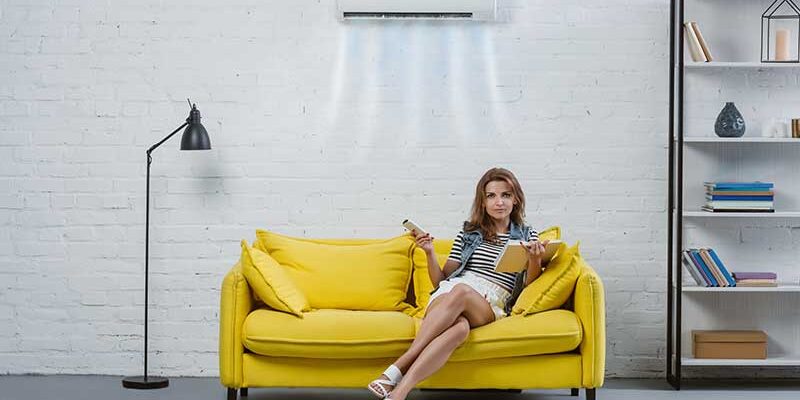As the mercury rises, the need for novel cooling technology becomes more pressing. With climate change aggravating the intensity and frequency of heatwaves, it is critical to find long-term solutions to maintain our environments comfortable while minimizing environmental impact. This blog dives into the most recent breakthroughs in cooling technologies, examines the function of passive cooling in architecture, highlights wearable products designed to keep us cool, and proposes lifestyle and community planning measures to mitigate the consequences of summer heat.
Eco-Friendly Air Conditioning
Traditional air conditioning systems are well-known for their high energy consumption and usage of greenhouse gas-emitting refrigerants. However, recent advancements are opening the way for more sustainable alternatives. One such achievement is the development of air conditioners that use natural refrigerants like propane or isobutane. These chemicals have a far lower global warming potential than synthesized versions. Furthermore, new systems use solar-powered cooling, which uses renewable energy to cut electricity consumption.
Another potential idea is thermally driven air conditioning. This system employs solar energy or waste heat from industrial activities to power a cooling process, providing a double benefit by reusing energy sources that would otherwise go to waste.
Passive cooling in architecture
Passive cooling design is a sustainable method of reducing the demand for mechanical cooling by optimizing architectural characteristics. Key strategies include:
- Building orientation and layout are intended to reduce direct sunshine exposure, hence lowering heat gain. Large windows face north or south (depending on the hemisphere), with few apertures on the east and west walls.
- Thermal Mass: Materials that absorb and store heat during the day and release it at night are used in the building’s design. This natural temperature regulation lowers the need for artificial cooling.
- Natural Ventilation: Designing for cross-ventilation allows cool breezes to flow through the building, lowering inside temperatures without the use of fans or air conditioning.
- Green Roofs and Walls: Vegetation layers on roofs and walls provide natural insulation, cooling the building envelope and enhancing air quality.
Wearable Cooling Devices
In the pursuit of personal comfort, wearable cooling technology provides a portable option. Cooling wristbands, vests, and even smart materials are being developed. To help regulate body temperature while on the go, these items employ a range of approaches such as phase change materials, evaporative cooling, and small battery-powered fans.
Lifestyle Adjustments and Community Planning
Beyond technical advancements, simple lifestyle changes can have a big impact on remaining cool. Choosing lightweight, breathable clothing, staying hydrated, and altering schedules to avoid outdoor activities during peak heat can make a significant impact.
On a bigger scale, community planning is essential in combating urban heat islands. Strategies include enhancing green space, installing cool roofs (which reflect more sunlight and absorb less heat), and creating pedestrian-friendly shaded places. Cities are also looking at the usage of reflective pavements to lower ground temperatures.
As we face the challenges of rising temperatures, the mix of novel cooling technology, sustainable building design, wearable devices, and careful lifestyle and community planning provides a comprehensive solution for staying cool. By accepting these ideas, we may not only improve our comfort during the hot summer months, but also help to create a more sustainable and resilient future.




